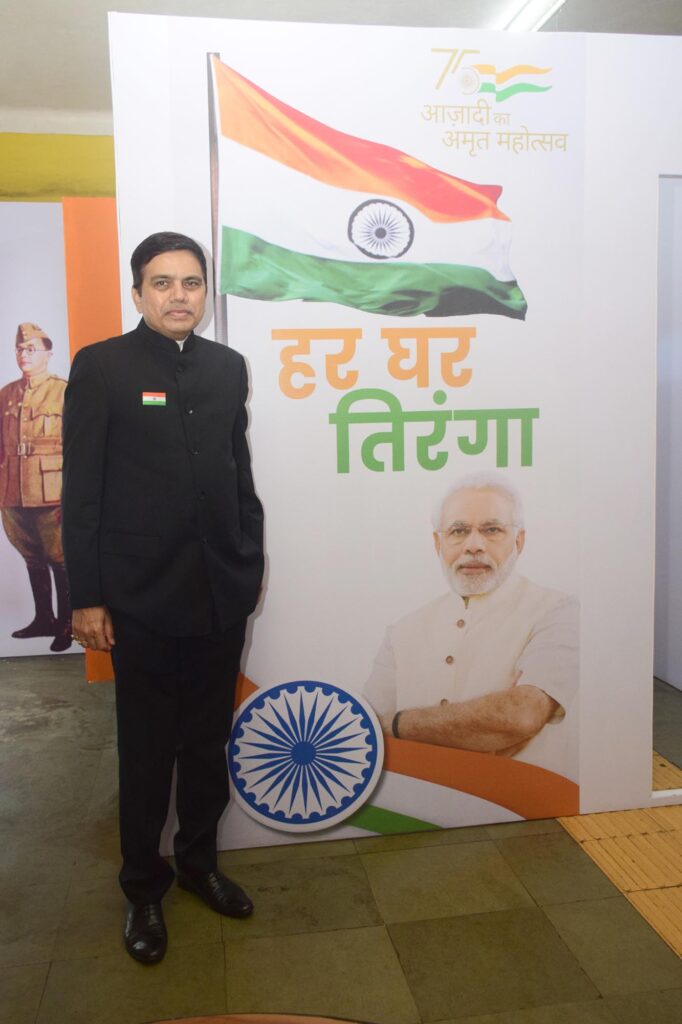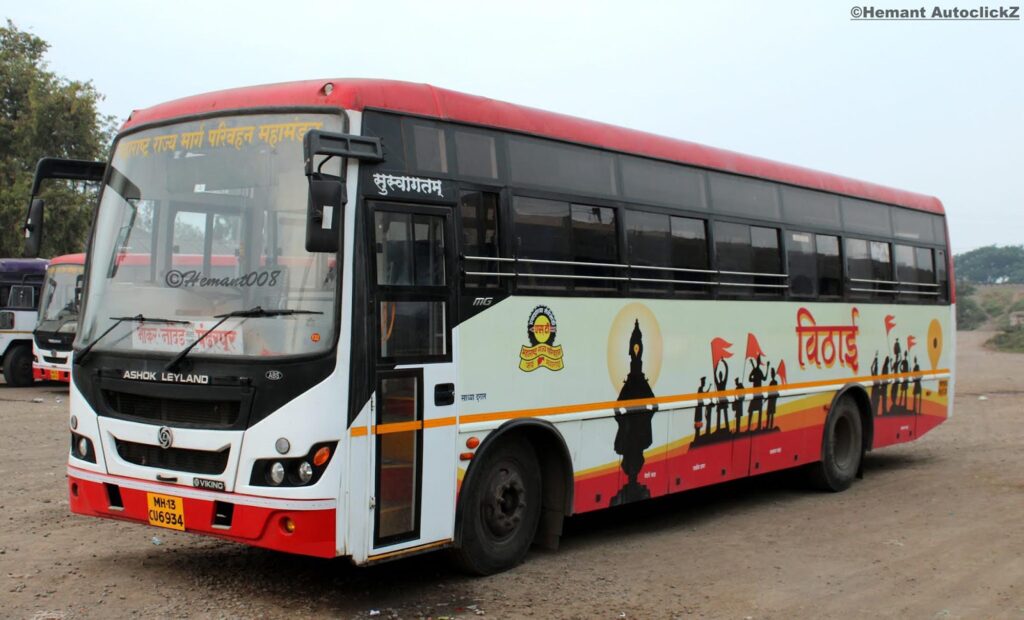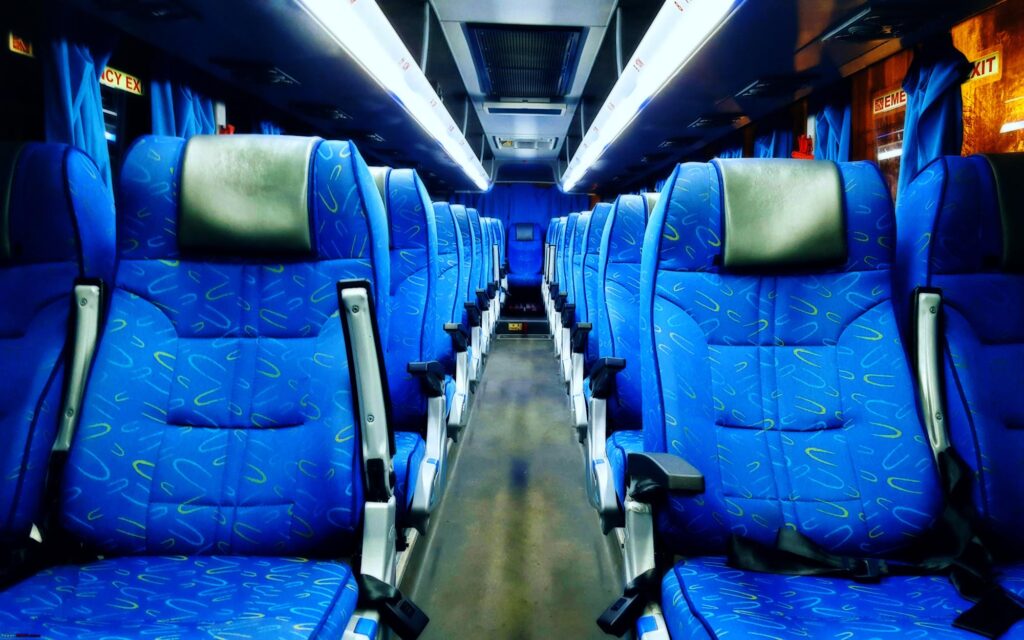In a recent interview with Shekhar Channe, IAS, Vice Chairman and Managing Director of Maharashtra State Road Transport Corporation (MSRTC), Rajesh Rajgor discovered the organization’s proactive efforts to embrace eco-friendly transport options and reduce reliance on diesel buses. Channe detailed the annual precision-driven process of route planning and optimization at MSRTC, shedding light on the corporation’s commitment to efficient and sustainable public transportation. The conversation also unveiled strategic initiatives encompassing route enhancements, fleet expansion, innovative revenue generation, and the paramount importance of KPIs and maintenance practices in elevating operational effectiveness.

The Maharashtra State Road Transport Corporation (MSRTC) is a government-owned corporation responsible for providing public bus transportation services within the state of Maharashtra. It operates a vast network of intercity, intrastate, and interstate bus services, connecting cities, towns, and villages across Maharashtra and its neighboring states. MSRTC plays a pivotal role in ensuring affordable, accessible, and reliable transportation options for a diverse range of passengers, contributing significantly to the socio-economic development and connectivity of the region.
MSRTC, established under the RTC Act 1950 by the State Government of Maharashtra, operates an extensive public bus transportation network throughout the state. The inception of MSRTC traces back to 1948 when the first bus journey commenced from Pune to Ahmednagar. Over the years, the corporation has grown remarkably, currently boasting a fleet of over 15,600 diesel buses, with a limited number of electric and CNG buses in operation and serving approximately 67 lakh citizens daily. MSRTC’s journey began with 30 wooden-bodied Bedford buses, evolving to introduce steel bodies, cushioned seats, and increased seating capacity. Despite challenges such as bad roads and financial constraints, MSRTC has maintained its commitment to accessibility and public service, earning its motto “jithe rasta, tithe ST” (where there’s a road, there’s a ST bus). Through dedication and innovation, MSRTC has not only transformed public transportation but also contributed to the socio-economic development of Maharashtra.
Over the years, MSRTC has demonstrated a commitment to adopting innovative technologies and sustainable practices, as showcased in its ongoing transition towards cleaner and greener mobility solutions, such as electric and CNG buses, to reduce environmental impact and enhance passenger comfort.
Greening the Fleet: Electric Buses and Beyond
Shedding light on the ongoing efforts to transform the fleet composition towards more eco-friendly alternatives, Channe emphasized the significant role of the Government of India’s FAME 2 (Faster Adoption and Manufacturing of Hybrid and Electric Vehicles) program in facilitating this transition. Under this initiative, MSRTC received a subsidy for the acquisition of electric buses, with about 100 already in operation and an additional 50 expected to join the fleet in the near future. This marks a substantial step towards reducing the dependence on diesel-powered vehicles.

Highlighting the transformational shift, Channe mentioned: “Our crucial partnership with Evey Trans Pvt Ltd., a consortium of Olectra Green tech Limited and Evey Trans Private Limited, for the supply, operation, and maintenance of 5,150 electric buses is leading this shift. These buses will be procured from Olectra Greentech Limited and delivered over a span of 24 months This bold move is a testament to MSRTC’s commitment to embracing electric mobility on a larger scale.”
In addition to electric buses, Channe discussed the conversion of existing diesel buses to Compressed Natural Gas (CNG), a move that not only reduces emissions but also makes use of the current infrastructure. “The process involves retrofitting 1,000 buses with CNG kits, with over 70 buses already successfully converted,” he added.
While exploring Liquified Natural Gas (LNG) as an alternative, Channe noted the challenges faced in the past due to limited availability in Maharashtra. However, the corporation has learned from these experiences and is now placing greater emphasis on LNG suppliers. “The bidding criteria require LNG suppliers to provide the fuel at a certain percentage below the current diesel rate, ensuring a sustainable and economically viable transition to LNG-powered buses,” he emphasised.
Route Expansion and Optimization Strategies
Delving deep into the intricate process of route planning, expansion, and optimization within the realm of public transportation Channe outlined the rigorous annual route optimization exercise undertaken by MSRTC. He said: “The optimization process revolves around a comprehensive analysis of routes, guided by a meticulous set of criteria. The paramount among these criteria is the objective of ensuring connectivity to every village, ensuring no area is left underserved. Furthermore, he emphasized the significance of bus frequency, considering morning and evening schedules, to guarantee effective village connectivity. The enhancement of ferry services plays a pivotal role in this regard.”

However, Channe candidly acknowledged the challenges inherent in this endeavor, primarily revolving around the availability of buses. Despite MSRTC’s fleet comprising approximately 15,500 buses, there exists a demand-supply gap. To address this limitation, MSRTC is venturing into the Gross Cost Contract (GCC) model, a mechanism where external vendors supply additional buses to augment the existing fleet. Channe clarified: “This approach doesn’t diminish the current fleet but rather supplements it. This strategy aligns with MSRTC’s aspiration to meet the estimated requirement of 20,000 to 22,000 buses for optimal service delivery.”
The GCC model, which extends beyond electric buses to encompass BS VI diesel buses like the renowned “Laal Pari Buses,” facilitates scalability while maintaining operational viability. Channe revealed that “MSRTC has already placed an order for 500 BS VI diesel buses under the GCC framework. As part of future plans, an additional 1,295 such buses are in the pipeline, further accentuating the corporation’s commitment to expanding and optimizing its bus fleet.”
Growing Revenue Strategies
Channe elucidated that route optimization is a dynamic and continuous process, undertaken annually to align with demand and assessment. He highlighted the three pivotal categories of services: village connectivity, school trips, and medium to long-distance routes. The decisions are data-driven, relying on historical load factors and customer response. “MSRTC ensures that even if a route isn’t profitable, at least one trip to each village remains obligatory, emphasizing the corporation’s commitment to comprehensive accessibility” he outlined.
When addressing concerns over overcrowding versus fleet availability, Channe revealed MSRTC’s impending addition of 5,150 AC buses under the Gross Cost Contract (GCC) model. These buses, both nine and twelve meters in length, cater to diverse road lengths and passenger densities. The focus remains on affordability and providing passengers with a comfortable journey.
Shifting towards MSRTC’s financial performance, Channe acknowledged the impact of the pandemic and employee strikes. He emphasized: “While the balance sheet may have shown negativity, the corporation maintained sufficient cash flow pre-COVID. The strike, though challenging, led to the government’s support, aiding MSRTC in meeting most revenue expenses.”
Channe underscored MSRTC’s dual strategy of reducing costs and generating revenue. He detailed the ongoing emphasis on public-private partnerships for land redevelopment to boost revenue. “The tangible results may take time, but the immediate focus lies in reducing costs through the conversion of buses to CNG and LNG, enhancing operational efficiency, and maintaining an optimal bus staff ratio for expense management,” he shared.
Key Performance Indicators and Maintenance Strategies
Channe emphasized essential KPIs for measuring efficiency, including the load factor and earning per kilometer. “The load factor represents passenger occupancy, while earning per kilometer is a pivotal financial indicator. These parameters are interconnected and influenced by the kilometer per 10-liter (KPTL) fuel efficiency, a crucial factor in evaluating bus performance. Another critical parameter is the breakdown percentage, reflecting the frequency of bus disruptions. MSRTC’s strategy aims to maximize the number of buses on the road to optimize service,” he stressed.
When discussing maintenance, Channe outlined a three-tier workshop system across Maharashtra. Primary maintenance is conducted in about 250 depots scattered throughout the state, while division workshops, situated at 30 locations, handle complex tasks like bodywork and accident repairs. Central workshops, located in Pune, Chattrapati Sambhaji Nagar, and Nagpur, focus on bodybuilding and major engine refurbishments.
An innovative approach to maintenance involves contracting with Original Equipment Manufacturers (OEMs). Channe revealed MSRTC’s collaboration with Tata Motors for maintaining newly introduced BSVI model buses, leveraging the manufacturer’s expertise in electronics-heavy systems. This strategic partnership ensures effective maintenance for five years, enhancing the corporation’s capability to manage advanced technologies.
Passenger Feedback, Technologies, and Future Vision
Addressing the crucial topic of passenger feedback, Shekhar Channe explained MSRTC’s methodologies for gathering valuable insights. Passengers have the option to provide feedback and complaints through toll-free numbers, dedicated complaint counters at bus stations, and online platforms such as the MSRTC website and social media channels. “To ensure passenger safety and comfort, the significance of driver training and rigorous testing cannot be neglected. Prospective drivers undergo a stringent selection process, including a computerized driving test and intensive training before joining MSRTC,” Channe highlighted.
Shifting the focus to technology, Channe acknowledged the implementation of electronic ticketing for the past decade and noted the recent integration of UPI and digital payment methods. He disclosed “The ongoing development of an app that will allow passengers to track their bus’s location and estimated arrival time, enhancing the overall travel experience is under process and that will accelerate e-ticketing,” he said.
Channe emphasized MSRTC’s commitment to passenger satisfaction and its vision for the future. He painted the corporation’s goals, including providing comfortable journeys for passengers, upgrading the quality of buses, and embracing self-sustainability. He stressed the importance of financial stability and internal process automation to achieve enhanced efficiency and financial control. “This approach aligns with MSRTC’s ambition to meet the evolving expectations of passengers, especially the younger generation, while ensuring the long-term success of the organization,” he shared. Channe’s insights reveal a multi-pronged approach towards achieving cleaner and sustainable mobility solutions for MSRTC. The strategic integration of electric buses, CNG retrofitting, and a carefully structured approach to LNG adoption underscore MSRTC’s commitment to reducing the environmental impact of its operations while paving the way for a greener future in the realm of public transportation.